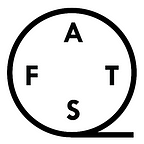The Stop-Motion Workflow
Stop Motion Basics #3
In every film set, there is a way to organize things such that the work can be done neatly and efficiently. Here I go through the steps that you will take to produce your first stop-motion animation, as well as tips on keeping your work station in order.
Any stop-motion film consists of 3 main phases:
A. Pre-production
- story creation
- storyboarding
- character design and creation
- props and environment creation
B. Production
- shooting the scenes
C. Post-Production
- recording voice-overs and sound effects
- choosing/ creating background music
- editing and exporting the final video
If we refer to our existing timeline, here’s how it would look like with the 3 phases.
PRODUCTION BASICS
In the following section, I will be detailing some of the key pieces of information you’ll need to get your production started.
If you are looking for how to start the workflow (pre-production), refer to the previous articles on storytelling and character design.
Let’s start with equipment needed. This is not a definitive list, and you could possibly use equipment with better or worse specifications and achieve similar results. The following list is what we are going to use in our project.
Equipment Required
- 1 x DSLR camera + 40mm F2.8 Lens
- 1 x AC Adapter for camera (you don’t want to run out of power)
- 1 Computer loaded with Dragonframe stop-motion software
- 1 USB cable for connecting camera to computer
- 1 tripod for stabilizing camera
- Clamp-on spotlights (with modifiers)
The following image will give you an idea of how to set everything up.
A Team Effort
Production on the set is a team effort. Every member counts! To ensure that your animation is finished on time, everyone has to know his/her role extremely well. Learn to work as a team. The chart below shows who’s who on the set.
CAMERA BASICS
Each photo you take with the camera is called a frame. This is the basic unit in our stop-motion animation. Many frames make a shot. A shot usually comprises of only one camera angle. Many shots make a scene. A change of scene would mean a change in the background and environment as well.
01. Shot Sizes
Because you are working with a fixed-zoom (prime) lens, changing the shot size requires you to move the camera nearer to or further away from your subject. Common shot sizes include the WIDE (establishing) shot, the CLOSE-UP shot, and the EXTREME-CLOSE-UP shot.
TIP #1: There is no point in using a wide shot throughout your film, nobody can see what is happening from that distance. Mix and match your shot sizes to tell the story!
02. Camera Angles
Different angles allow you to tell the story differently. Observe the following scene shot from different angles.
The straight-on shot gives us a really good idea of the action (sleeping boatman) but does little to enhance the story.
The profile shot gives us more information about the background and helps set the context, and in this case might also help to convey the movement of the boat.
The low angle shot lets us observe the boatman’s sleepy expression, and puts him in a bit of a ‘hero light’. This angle is sometimes used for superheroes or characters that we ‘look up to’, as if we are in a position of less power.
The high angle shot on the other hand, puts the audience in a position of power. It is as if we are looking through the trees and expecting something to happen to the character (that he doesn’t know about). This angle is also reminiscent of security camera footages where it looks like we are being watched.
In conclusion, when choosing your angles, think about how the audience should feel. Experiment with your camera angles and decide which best fits your story. There are no limits!
ANIMATING IN DRAGONFRAME
The video below would provide a quick start to animating your stop-motion film in dragonframe, but production techniques could differ depending on the type of material you are working with.
If you’re looking to advance some of your techniques, this page consists of official videos from Dragonframe for working with your Animation timeline.
Pssst…Did you know? This page can also be accessed by the URL http://is.gd/stop_and_go
